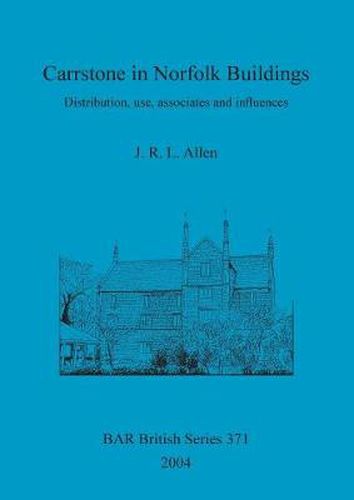Readings Newsletter
Become a Readings Member to make your shopping experience even easier.
Sign in or sign up for free!
You’re not far away from qualifying for FREE standard shipping within Australia
You’ve qualified for FREE standard shipping within Australia
The cart is loading…






This title is printed to order. This book may have been self-published. If so, we cannot guarantee the quality of the content. In the main most books will have gone through the editing process however some may not. We therefore suggest that you be aware of this before ordering this book. If in doubt check either the author or publisher’s details as we are unable to accept any returns unless they are faulty. Please contact us if you have any questions.
The purpose of this monograph is to examine, primarily from a geological perspective, the distribution and use of indigenous construction materials - carrstone especially but also its competitors together with brick - in the hamlets, villages and towns of north and west Norfolk, part of the fourth largest county in England, without restriction as to period (Roman-modern) or kind of building (cottage, farm, great house, religious, public/community, official).The area embraced roughly coincides with the physiographic sub-regions distinguished as the level, low-lying Fenland with its extensive controlled or artificial drainage, the gently rising Western Escarpment, the North Alluvial Plain along the North Sea coast, the elevated but comparatively level and gently dissected Good Sands, with the Cromer Ridge in the north and east, and the sandy Breckland. A study on such a geographical and temporal scale must, however, be regarded as no more than a reconnaissance, but it brings light to bear on past changes ineconomic and social factors in these parts of the county, will serve as a springboard for detailed, local work in the future, and may interest conservationists and those whose responsibilities include planning, development, and the preservation of the character of the area.
$9.00 standard shipping within Australia
FREE standard shipping within Australia for orders over $100.00
Express & International shipping calculated at checkout
This title is printed to order. This book may have been self-published. If so, we cannot guarantee the quality of the content. In the main most books will have gone through the editing process however some may not. We therefore suggest that you be aware of this before ordering this book. If in doubt check either the author or publisher’s details as we are unable to accept any returns unless they are faulty. Please contact us if you have any questions.
The purpose of this monograph is to examine, primarily from a geological perspective, the distribution and use of indigenous construction materials - carrstone especially but also its competitors together with brick - in the hamlets, villages and towns of north and west Norfolk, part of the fourth largest county in England, without restriction as to period (Roman-modern) or kind of building (cottage, farm, great house, religious, public/community, official).The area embraced roughly coincides with the physiographic sub-regions distinguished as the level, low-lying Fenland with its extensive controlled or artificial drainage, the gently rising Western Escarpment, the North Alluvial Plain along the North Sea coast, the elevated but comparatively level and gently dissected Good Sands, with the Cromer Ridge in the north and east, and the sandy Breckland. A study on such a geographical and temporal scale must, however, be regarded as no more than a reconnaissance, but it brings light to bear on past changes ineconomic and social factors in these parts of the county, will serve as a springboard for detailed, local work in the future, and may interest conservationists and those whose responsibilities include planning, development, and the preservation of the character of the area.